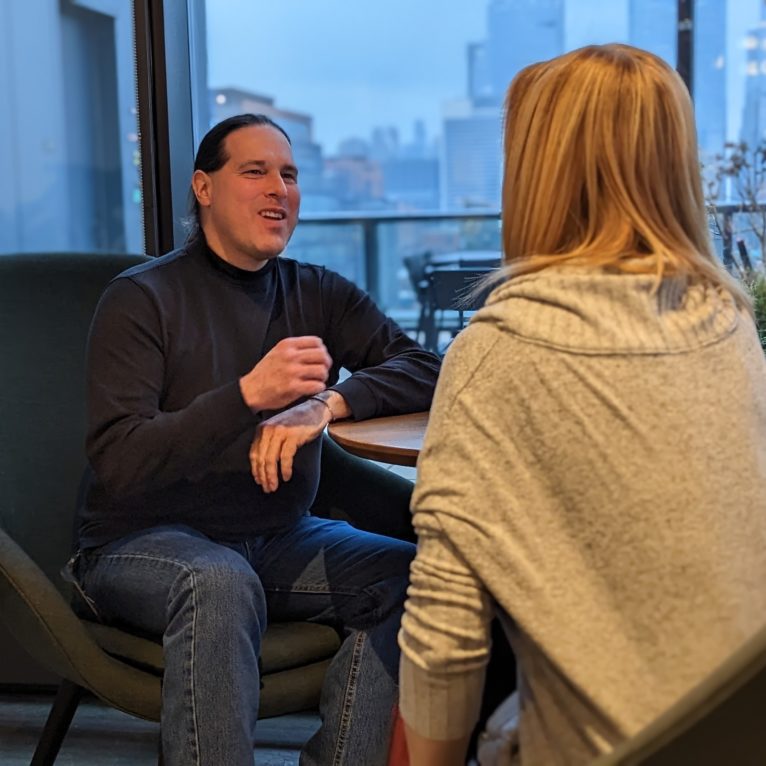
Share article:
Tags:

If you remember Batfink (yes, showing my age) – his main form of defence was covering his body with one of his wings whilst saying “Your bullets cannot harm me! My wings are like a shield of steel!” (Rooting for those of you that just read that in his voice)..
What’s your shield right now?
If you couldn’t answer this, then having one is an essential life tool.
It’s not just about being resilient to what life throws at us but being robust enough to bat back that curve ball.
De-selection conjures up the world of sports and the selection process to get on the team, squad, Europeans, internationals or even the Olympics. The magnitude of how many people this affects could be taken from looking at just one sporting fact – 90% of all elite youth football players never make it professional (1). Now open your mind to every sport and every situation out there that causes this feeling.
If you are self-employed, each job, project, or workgroup can feel like a selection process and the more is matters to us the harder the effect of not being selected. It even applies to friendship groups and that party or outing you hope to get an invite for. All performers, in any sphere, in every audition.
De-selection is everywhere and affects people differently – but being human, it comes with a stomach punch.
Selection is a source of stress. Undeniable. Add to this if de-selection is a threat to a personal goal or opportunity that you put great importance and value on – then up the stress.
The back story to the selection might be years of dedication and a high level of investment in time and training to get you to this point. Increase the stress again.
You may even view de-selection as a threat to your identity – cause you to question how you see yourself, who you are. Now think levels of distress.
It’s easy to imagine the level of distress that de-selection is known to cause – depression, anxiety, humiliation, reduced self-worth, identity confusion, and suicide (2).
What can be done to minimise the impact?
Well, outside the world of professional sports, who have long since known the negative impacts and put in multi layered support, its mostly up to us to be aware of how it affects us and have a shield of strategies ready.
Your shield has 2 parts;
Part 1 – Protection – those elements that you can have in place to protect you from feeling the full impact of hits in general.
Part 2 – Coping strategies – those things you can IMMEDIATELY put in play after a hit.
This article looks at Part 2 – what can you do once the event has happened.
The depth of effect of this on some of us warrants much more than can be dealt with in a short web article so there will be others on this subject. BUT – Please, if you are having severe effects from an event please contact your doctor – this is not something to go alone – ever.
Coping Strategies
With deep breathes, your aim is to self-regulate your thoughts and body responses as quickly as possible. We are trying to minimise the distress that has just been triggered and reduce the negative impact on ourselves.
See the process as 3 recovery parts; Soothe, zoom out and action.
It’s hard to know which comes first out of soothe and zooming out (re-appraising and seeing the bigger picture) but the most important thing to take from this is don’t go this alone.
Find a calm recovery buddy. We are social animals, so be brave and find your people – they will be just as relieved that you will be there to return the favour when the roles are reverse!
Step One – Soothe your reactions
Part of you has just felt threatened. The central nervous system swoops in like the military, putting you straight into the fight/ flight response (see glossary) – this is the whole kick in the stomach feeling, changes in heart rate and reactive emotions. Unfortunately, we don’t always need the full military response, so get about calming those troops.
- Soothe your self – You may already know what works for you but the aim is to remove yourself from the situation and find a place to feel safe. Taking yourself away from the group, going for a walk, grabbing a coffee, or finding people you feel safe with. The list is endless and personal to you.
- Social support – this is where your calming buddy comes in. Social support is seen as being critical to dealing with emotions (3). Vent, start the re-appraisal process, but with the aim to de-escalate your emotions.
Try to reduce the number of times you re-live the moment in your head.
Remember, the brain doesn’t have eyes so every time you relive a stressful moment in your head, your brain and body thinks it’s happening all over again and re-activates troops.
We actually need external validation. It’s not a weakness. Humans are social animals, this is natural behaviour. People that saw the situation are great for collecting different perspectives from and can also help you recall facts about you that counter the attack you felt. - Self-compassion – This can feel like a lifetime pursuit but it is recognised to be the MOST IMPORTANT COPING STRATEGY. The kindness and compassion you would show a friend needs to be the same you give to yourself. You are human, you deserve kindness and understanding. Sit with this as you reflect, actively stop your self-critic in its tracks, do this repeatedly and let compassion step in.
Step 2 – Zoom out and see the bigger picture
This isn’t always easy, these situations bring all your focus, like a camera on zoom, to a very specific event. Actively zoom out and take a wider view.
The idea is to reduce the significance of the event to us. Put it alongside the larger facts and the big picture at play. Next, look at the factors that were in your control and those that were not and take these onboard. Then, change the meaning of the outcome and put it to bed.
If you took a still shot of ‘the moment’, work through each camera angle to collect evidence of the factors at play.
- Other people’s perspectives: Work through each person involved and see things from their perspective (using your rational brain). Each person will have factors affecting them at that moment in time: tiredness, stress, problems at home, hunger, having a bad day, their own insecurities and frustrations.
- See the good – Things go wrong, you are not perfect. Now is the time to flip that and look at what is working and going well. This could include noting what you could do differently next time.
- Personal feedback – Remind yourself of your strengths and achievements so far! Go into depth with this one – remember who you are, what you’ve done and how far you have come on your journey. It will put the event into perspective.
Step 3 – Action a coping and recovery plan.
In a nutshell: Recover, replenish, re-focus, re-energise and re-balance using whatever positive activities that will help you achieve these.
The overall goal – Reduce the significance and meaning of the event and use it to re-focus on you, where you want to go and what you want to achieve.
Recover and replenish
The effect of the deselection could be a life changing moment for you. One that exhausts all of your coping reserves, leaving you nothing to start active measures to move forward.
Facts:
- Stress and the emotions involved are exhausting. Make sleep a priority.
- If the impact was hard, don’t be surprised if you lack self-control, find it hard to make decisions or take active steps forward.
- A big emotional impact on your brain needs to be seen the same as injuring any other part of your body; like a muscle or bone. Both need rest to recover.
You don’t think twice about having a plaster cast on a fracture, so give the same understanding to providing a cast for your brain.
Our habitual daily routine, that one that we don’t even need to think about to get through our day, is the best cast. Allow yourself to essentially spend time being passive; no decision making, no worrying about self-control, take the line of least resistance (4).
Re-focus, re-energise and re-balance
The next step is to flood yourself with positive experiences and emotions.
- Remember your achievements so far
- Re-plan the steps you are going to take to reach your next goal.
- Re-capture your enthusiasm and zest for life
- Spend time doing exciting, fun activities
- Chuck yourself back into training
- Surround yourself with the best people
Summary
Know your most effective sooth and zoom out plan. Explore different coping strategies and once you have worked out what gives the speediest recovery, make it your ‘Go to’ plan.
Be intentional, put in effort, and surround yourself with people who inspire, encourage and support you.
- Jolley, D., McCready, C., Grenville-Cleave, B., and Brady, A. (2018). My future today: Reflecting on positive psychology in professional football academies. In: Brady, A. and Grenville-Cleave, B. (eds). Positive Psychology in sport and physical activity. New York: Routledge.
- Blakelock, D., Chen, M., & Prescott, T. (2019). Coping and psychological distress in elite adolescent soccer players following professional academy deselection. Journal of Sport Behavior, 41(1), 0.
- Milne, M. J., & Neely, K. C. (2022). Exploring female dancer’s emotions and coping experiences following deselection: An interpretative phenomenological analysis. Psychology of Sport and Exercise, 63, 102289.
- Snyder, C. R. (ed.) (1999). Coping: The Psychology of What Works. New York:Oxford University Press.
Further reading
Brady, A. and Grenville-Cleave, B, (Eds.) (2018). Positive psychology in sport and physical activity: An introduction. London and New York: Routledge.
Kernbach, S. (2022). Towards a science of action-concepts and theories to reduce procrastination and overcome the intention-action-gap. European Academy of Management Annual Meeting (EURAM).


